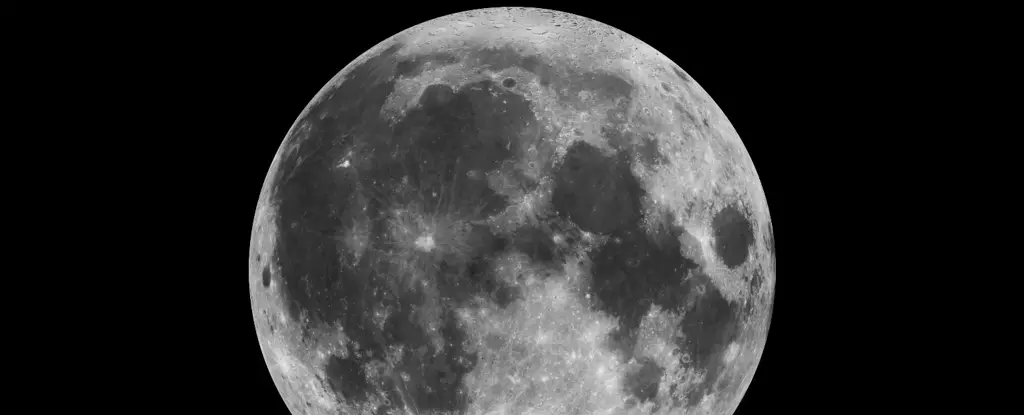As humanity continues to explore the cosmos, we are frequently reminded of the wonders that inhabit our solar neighborhood. Recently, Earth has welcomed a guest of cosmic proportions—an asteroid colloquially known as a “mini-moon.” This transient companion, designated as 2024 PT5, is set to make its mark by orbiting our planet for a brief period, offering an exciting opportunity for astronomers and space enthusiasts alike to observe and study its unique properties.
This temporary natural satellite, measuring around 10 meters (33 feet) across, is not entirely new to Earth’s gravitational embrace. It has a storied past filled with flybys and cosmic meetings that extend back over half a century. The unpredictable dance between Earth and this cosmic wanderer fascinates scientists and provides insights into the behavior of near-Earth objects.
Discovered by the Asteroid Terrestrial-impact Last Alert System (ATLAS) on August 7, just a day prior to its closest approach to our planet, 2024 PT5 was part of an astrological dance occurring just beyond our atmospheric confines. The asteroid approached within approximately 567,000 kilometers (352,300 miles) – about 1.5 times the distance to the Moon. Using data gathered from various observations, astronomers were able to chart its course and predict its upcoming orbit, commencing on September 29, 2024.
What makes this encounter particularly intriguing is the asteroid’s unique horseshoe-shaped trajectory, which, coupled with its relatively slow movement, suggests a fleeting period of companionship with Earth for about 56.6 days. This so-called “honey(mini-)moon” phase adds an element of romance to what is otherwise a scientific exploration, revealing that even celestial events can inspire an attachment to the vastness of space.
One of the most fascinating aspects of 2024 PT5 is its connection to a larger category of celestial wanderers known as the Arjunas. This group comprises near-Earth objects sharing similar orbits and characteristics with Earth. Through meticulous analysis and tracking, astronomers can trace 2024 PT5’s history back 60 years while also making educated predictions about its future path.
Upon peering into the annals of time, researchers uncovered its past encounters with Earth, marking interactions in 2003, 1982, and 1960—all of which took place at distances exceeding 8.2 million kilometers (5.1 million miles). The statistical likelihood of 2024 PT5 being artificial space debris is low, a relief for those who would prefer to think of it as a natural cosmic companion rather than a remnant of humanity’s space-faring endeavors.
Looking ahead in time, 2024 PT5 is expected to make another pass towards Earth on November 8, 2055. This return will not be nearly as intimate, taking place at a distance of approximately 5.2 million kilometers (3.3 million miles). The journey doesn’t end there; predictions suggest that this celestial body may grace Earth again in January 2084, albeit at an even further distance of 1.66 million kilometers (1 million miles).
While this anticipated sojourn is exciting for astronomers, it also reminds us of a rich history of mini-moon visits. For instance, in 2020, scientists discovered a smaller asteroid that had been orbiting Earth for three years before it finally drifted away. Additionally, another unique case from 2016 involved a quasi-satellite that followed our planet, entwined in its gravitational grip for nearly a century.
Mini-moons like 2024 PT5 serve a dual purpose; they not only captivate our imaginations with visions of celestial encounters but also play a crucial role in the study of near-Earth objects. Understanding their orbits, origins, and interactions offers invaluable information about the formation and evolution of our solar system. Each passing mini-moon presents a unique opportunity for scientific discovery, allowing us to piece together a cosmic puzzle that stretches billions of years into the past and hints at the future.
As 2024 PT5 embarks on its brief rendezvous with Earth, we stand to gain both knowledge and wonder from this fleeting relationship. Our new mini-moon invites us to embrace the magic of the universe, pushing the boundaries of our understanding while reminding us of our intimate connection to the cosmos. With each discovery, we are not just observers but participants in a grand, ongoing cosmic narrative—one where mini-moons like 2024 PT5 take center stage, leaving us yearning for more.

